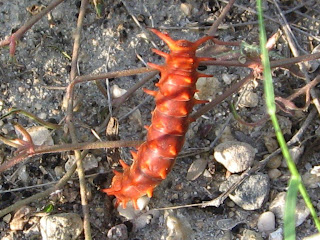Family pal Derek is taking 'Field Studies' this year and the next unit is on plants. As good a time as any for us to review/learn some plants and their families. First up (because I have photos at the ready), Family
Solanaceae. All photos by Ned Harris.
 |
| Desert Tobacco |
Number 26 on Derek's list is
Desert Tobacco (
Nicotiana obtusifolia). Don't smoke, eat, or snort this one! Like many plants in this family (with the exception of potatoes and tomatoes), it's poisonous. There are a number of these plants growing along the road in Sabino Canyon. They don't get very tall; not nearly as tall as Tree Tobacco.
 |
| Tree Tobacco |
I've only seen one
Tree Tobacco (
Nicotiana glauca) along the road, near stop 8; but it's not a very impressive example. It is at least 4-feet tall, though, and the flowers are bright yellow. Don't consume this one, either. Stick with potatoes.
 |
| Sacred Datura (aka Jimson Weed) |
Number 27 on his list is
Sacred Datura (
Datura wrightii). There are some very big plants in the riparian area above the dam. According to my emergency room connection, there is at least one poisoning every year from this plant. 'Kids' think they'll have revealing visions if they smoke it. The only vision the smoker is going to have is one of the inside of an ambulance, if that. Smokers of this plant fall under the rubric 'stupid beyond redemption'.
 |
| Wolfberry |
Another plant in this family whose fruits are NOT poisonous is Wolfberry. I'm not going to guess which of the four species found in Sabino Canyon this one is, but the genus is
Lycium. (And, since Derek doesn't need to learn this one, we'll hold off on the species i.d.!)


























